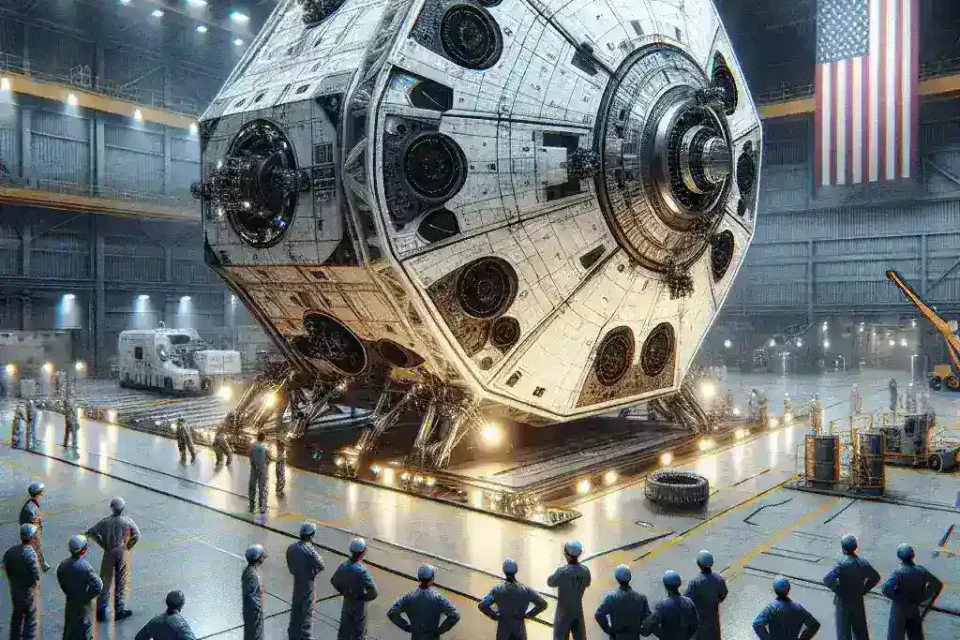NASA Begins Test of Reusable Lunar Cargo Landers

Introduction
The era of lunar exploration is witnessing a significant transformation as NASA begins testing reusable lunar cargo landers. These state-of-the-art vehicles are designed to facilitate the delivery of essential supplies and equipment to the Moon’s surface, promising to extend the capabilities of future missions and support sustainable human presence in space. This article delves into the implications of these tests, the technology behind the landers, and the broader vision for lunar exploration.
The Need for Reusable Lunar Cargo Landers
As humanity aims to establish a long-term presence on the Moon, the logistics of transporting cargo have become paramount. Traditional lunar missions have relied heavily on expendable landers, which limits the efficiency and increases the costs associated with repeated missions. NASA’s initiative towards reusable lunar cargo landers addresses these challenges by:
- Reducing Costs: By reusing landers, NASA can significantly lower the financial burden of lunar missions.
- Increasing Frequency: Reusable systems can allow for more frequent missions, enhancing the pace of exploration and scientific research.
- Enhancing Sustainability: Reusable technology aligns with NASA’s commitment to sustainable practices in space exploration.
Historical Context
To appreciate the current advancements, it is essential to understand the history of lunar landers. The Apollo program, which successfully landed humans on the Moon in the 1960s and 70s, relied on one-time use lunar modules. Fast forward to the Artemis program, which aims to return humans to the Moon by the mid-2020s; the development of reusable landers represents a paradigm shift in space logistics.
The Artemis Program and its Vision
The Artemis program is not just about returning humans to the Moon; it’s about establishing a sustainable human presence by 2028. The introduction of reusable landers is a critical component of this initiative. These landers are expected to:
- Support lunar surface operations by delivering supplies, scientific instruments, and even crew to various locations on the Moon.
- Facilitate the construction of lunar habitats and research stations, contributing to the long-term goals of Mars exploration.
- Enhance international collaboration by involving commercial partners and foreign space agencies.
Technology Behind Reusable Lunar Cargo Landers
The technology utilized in NASA’s reusable lunar cargo landers incorporates advanced engineering and innovative design principles. Some key features include:
1. Vertical Landing Capability
Utilizing advanced propulsion systems, these landers are designed to perform vertical landings, similar to SpaceX’s Falcon 9 rocket. This capability allows for more precise landings and the ability to operate in various lunar environments.
2. Modular Design
The modular approach allows for easy upgrades and maintenance, ensuring that the landers can evolve with technological advancements and mission requirements.
3. Autonomous Navigation Systems
Equipped with autonomous navigation technology, these landers can make real-time adjustments to their flight paths, ensuring safe landings in diverse terrain.
Testing Phase
The current testing phase involves a series of rigorous evaluations to assess the landers’ performance under various simulated lunar conditions. This phase includes:
- Static Fire Tests: Evaluating the lander’s engines and propulsion systems.
- Flight Simulations: Testing navigation and landing capabilities through virtual environments.
- Environmental Testing: Exposing landers to lunar-like conditions, including extreme temperatures and radiation levels.
Future Predictions
As NASA progresses with these tests, several predictions can be made regarding the future of lunar exploration:
- Increased Commercial Partnerships: The reusable landers may attract interest from commercial space enterprises, leading to innovative collaborations.
- More Frequent Missions: The operational efficiency of reusable systems could enable a calendar filled with lunar missions.
- Expansion Beyond the Moon: The technologies developed for lunar cargo landers could pave the way for similar reusable systems for Mars and beyond.
Pros and Cons
While the development of reusable lunar cargo landers presents numerous advantages, it is essential to consider potential drawbacks:
Pros
- Cost Efficiency: Reusability translates into lower mission costs.
- Flexibility: The ability to adapt and upgrade landers can facilitate various mission profiles.
- Enhanced Research Opportunities: More cargo deliveries allow for increased scientific research on the lunar surface.
Cons
- Technical Risks: Developing new technologies involves risks and unforeseen challenges.
- Initial Investment: Though reusable, the upfront costs of research and development can be significant.
- Operational Complexity: Managing reusable systems may introduce complexities in mission planning and logistics.
Conclusion
The testing of reusable lunar cargo landers marks a pivotal moment in NASA’s journey towards sustainable lunar exploration. By embracing innovative technologies and methodologies, NASA is not only paving the way for future missions to the Moon but also setting the stage for human exploration of Mars. As these tests progress, the world watches with anticipation, eager to witness the next chapter in humanity’s quest to explore the cosmos.
